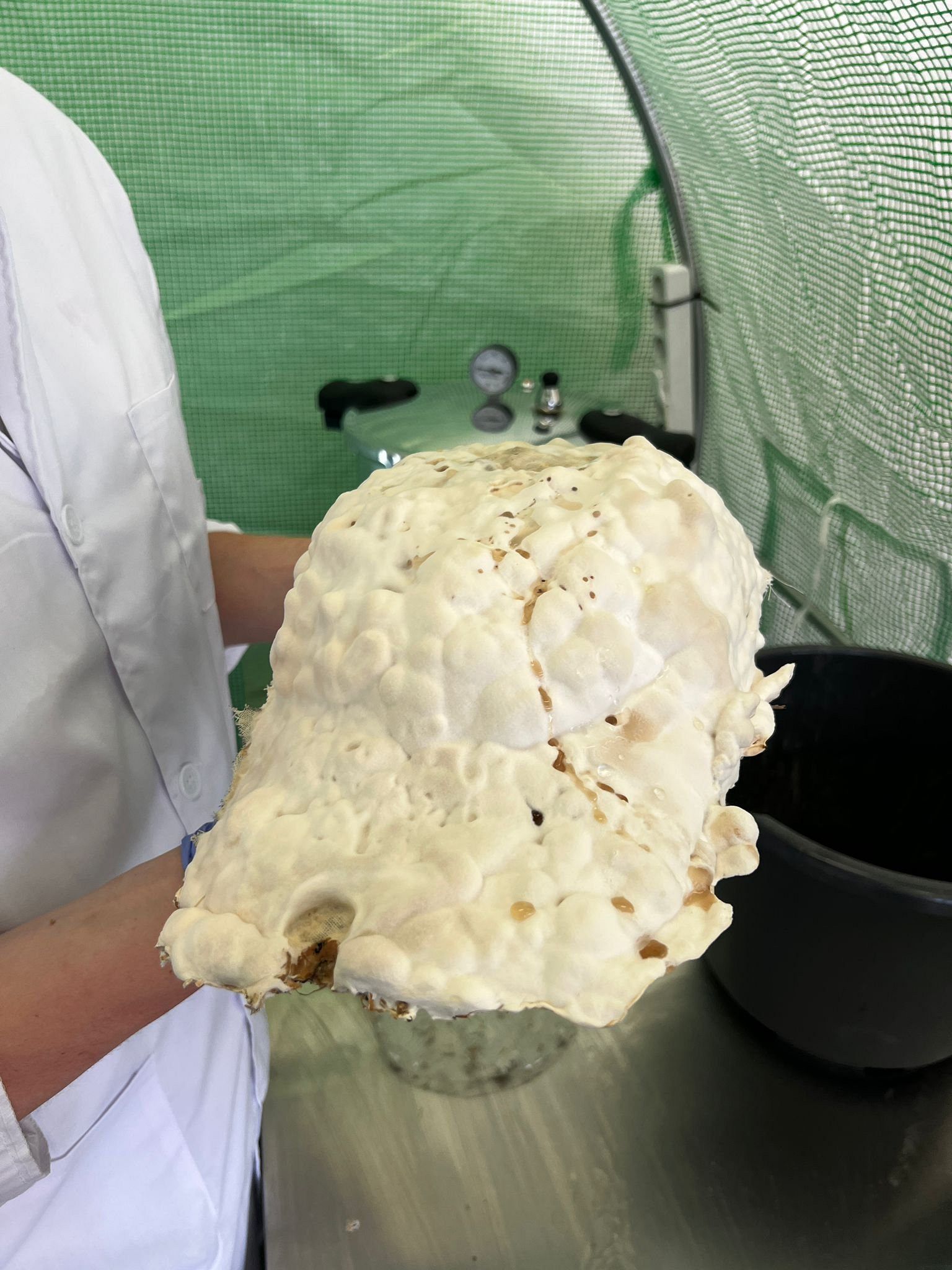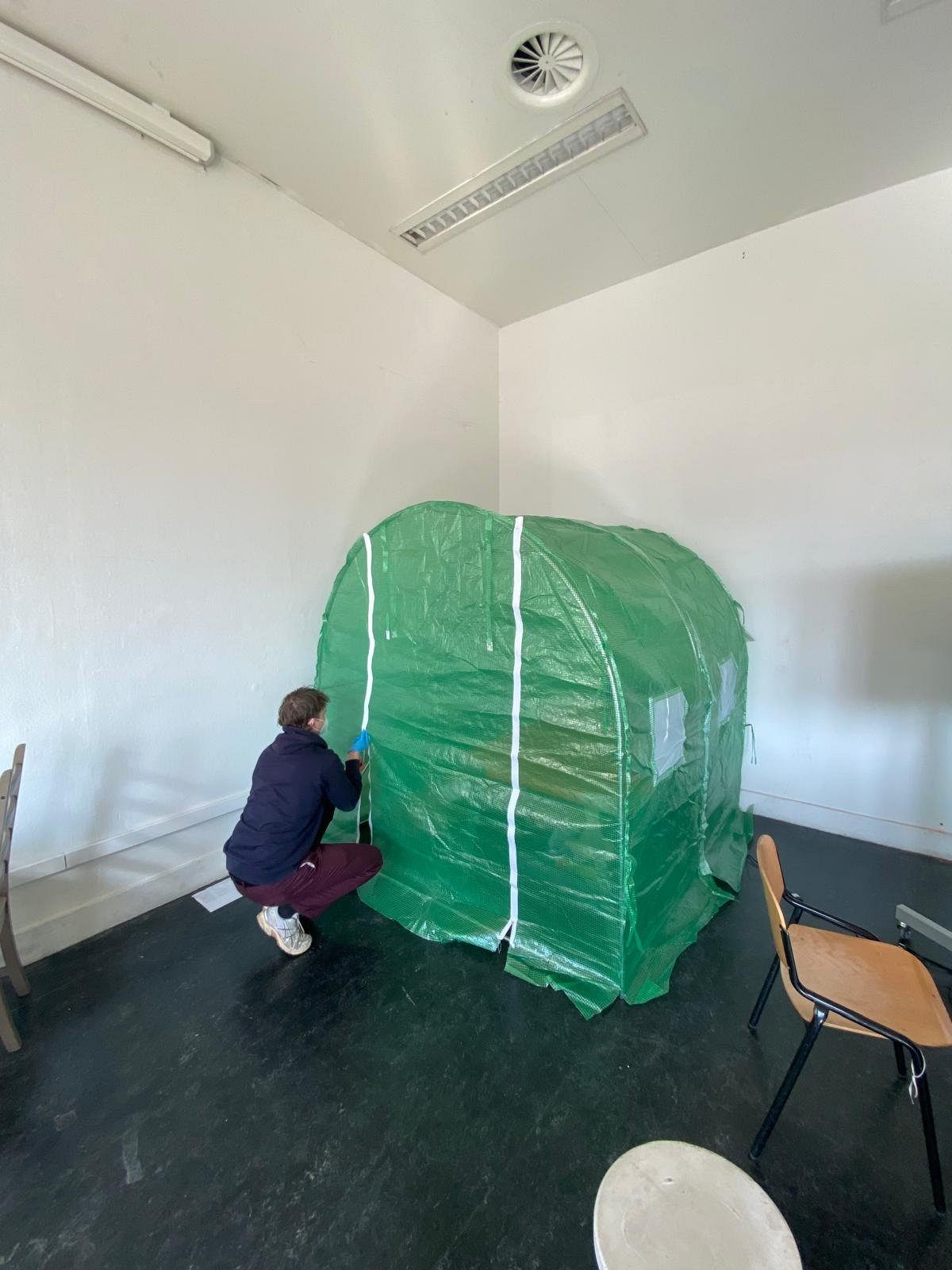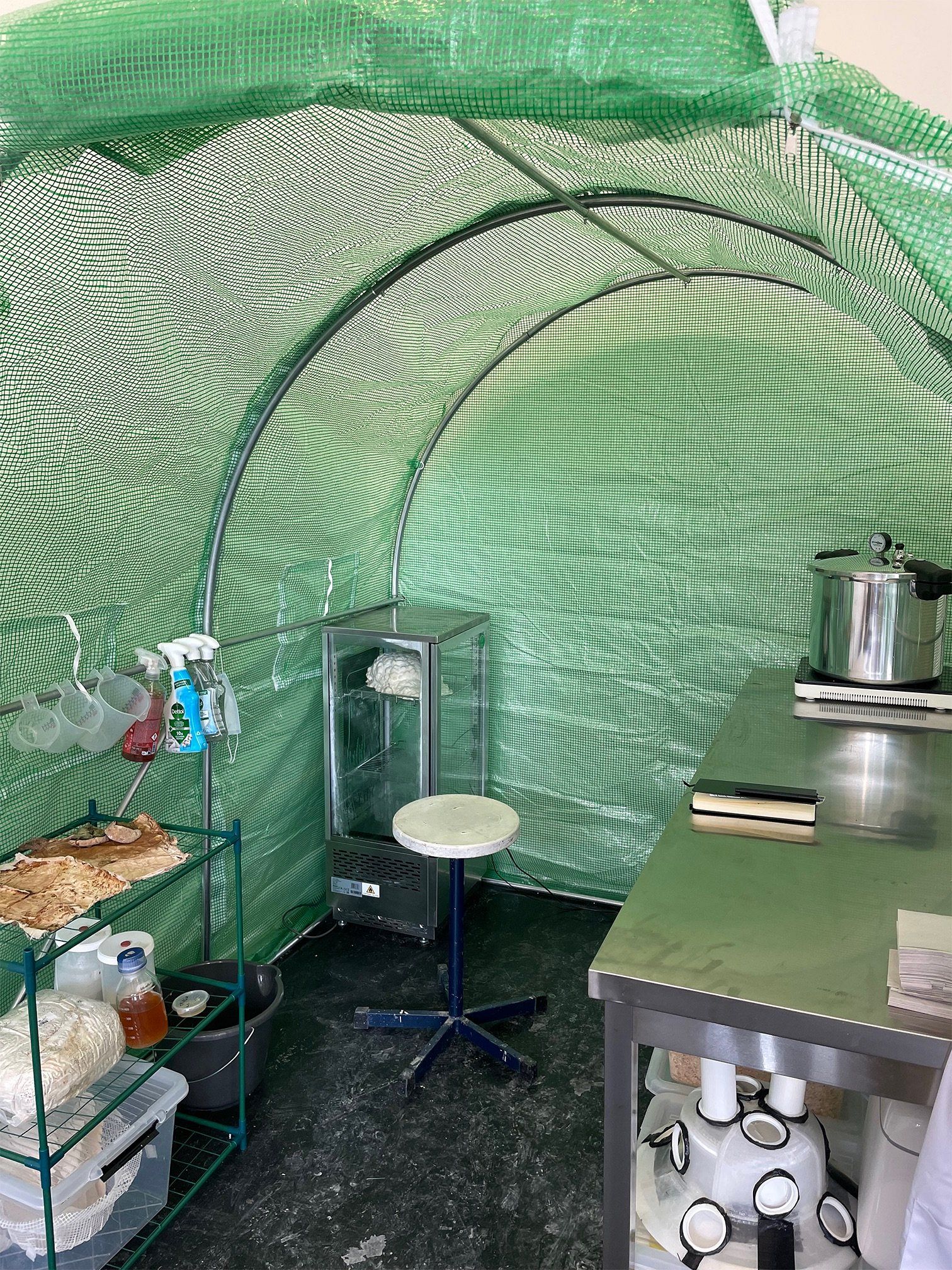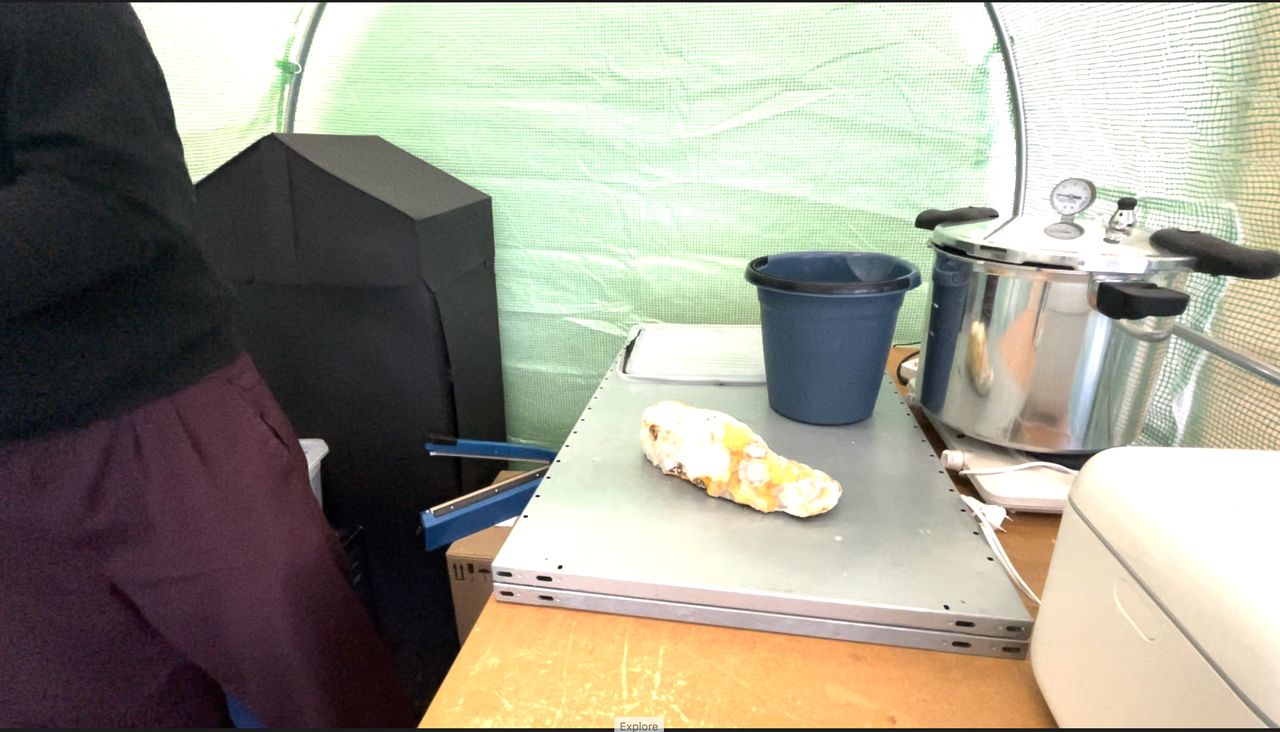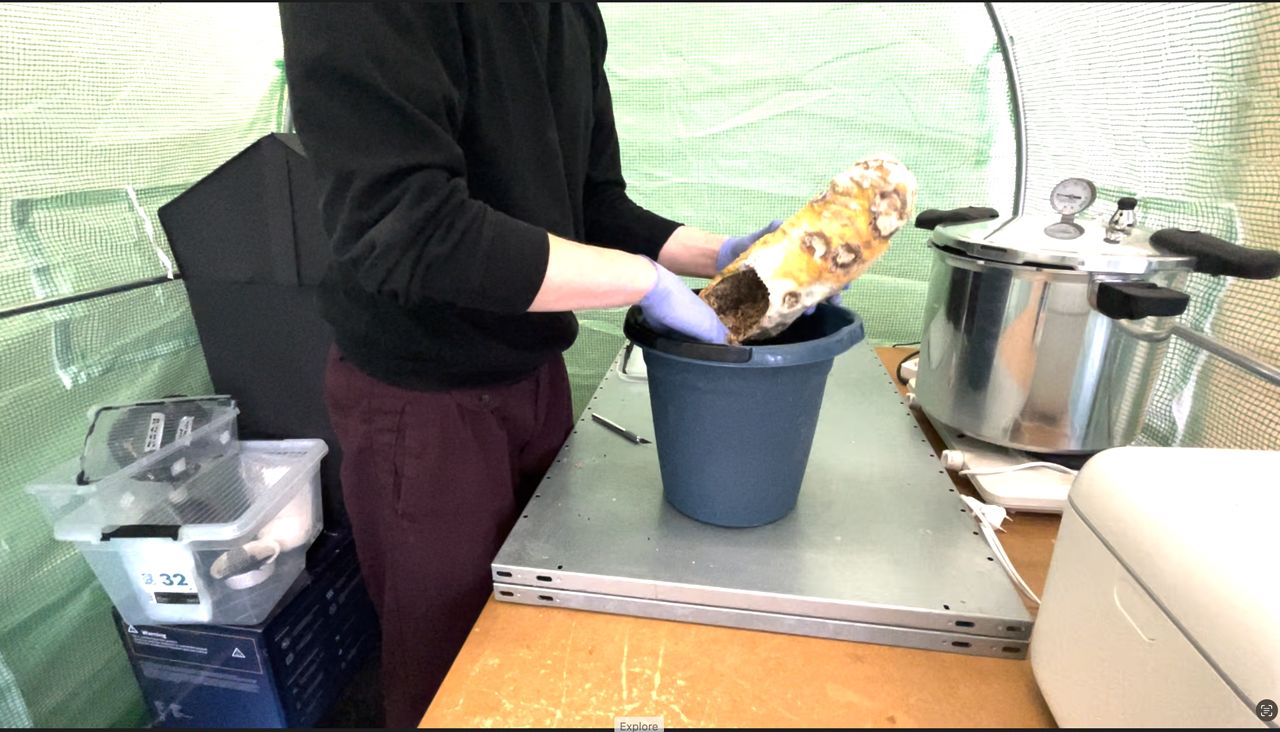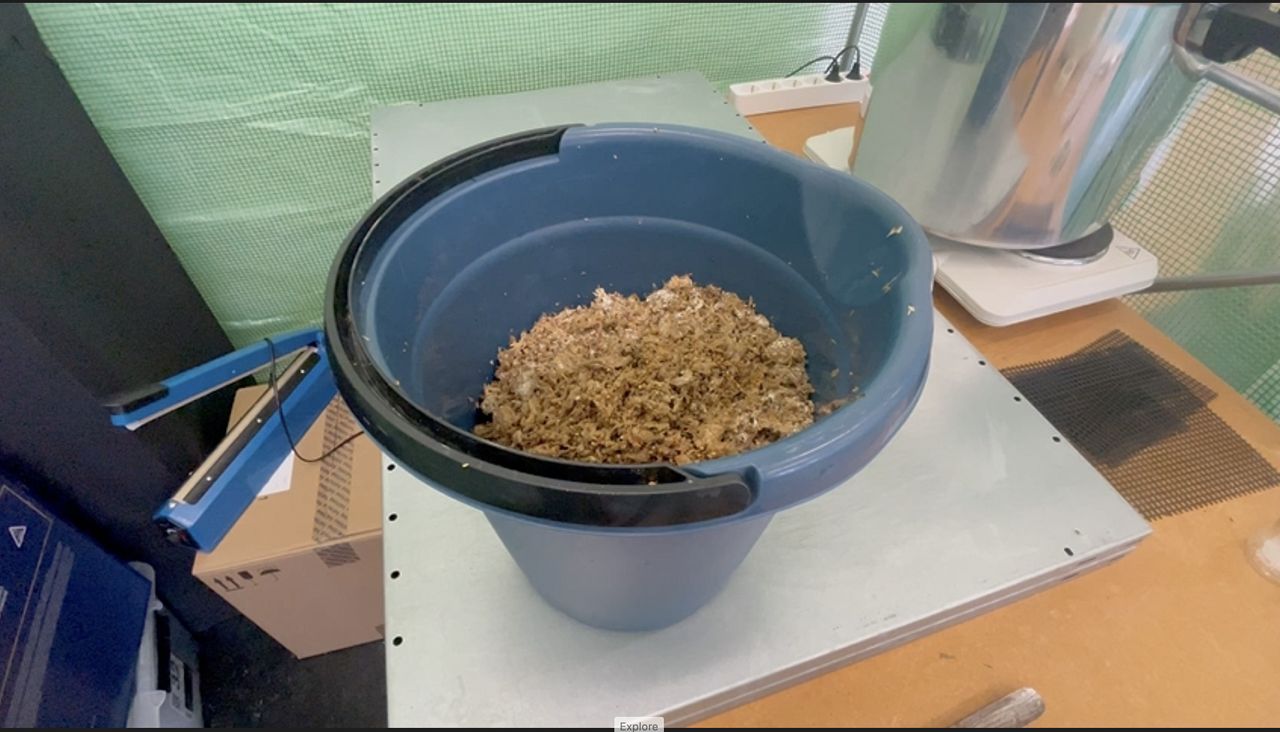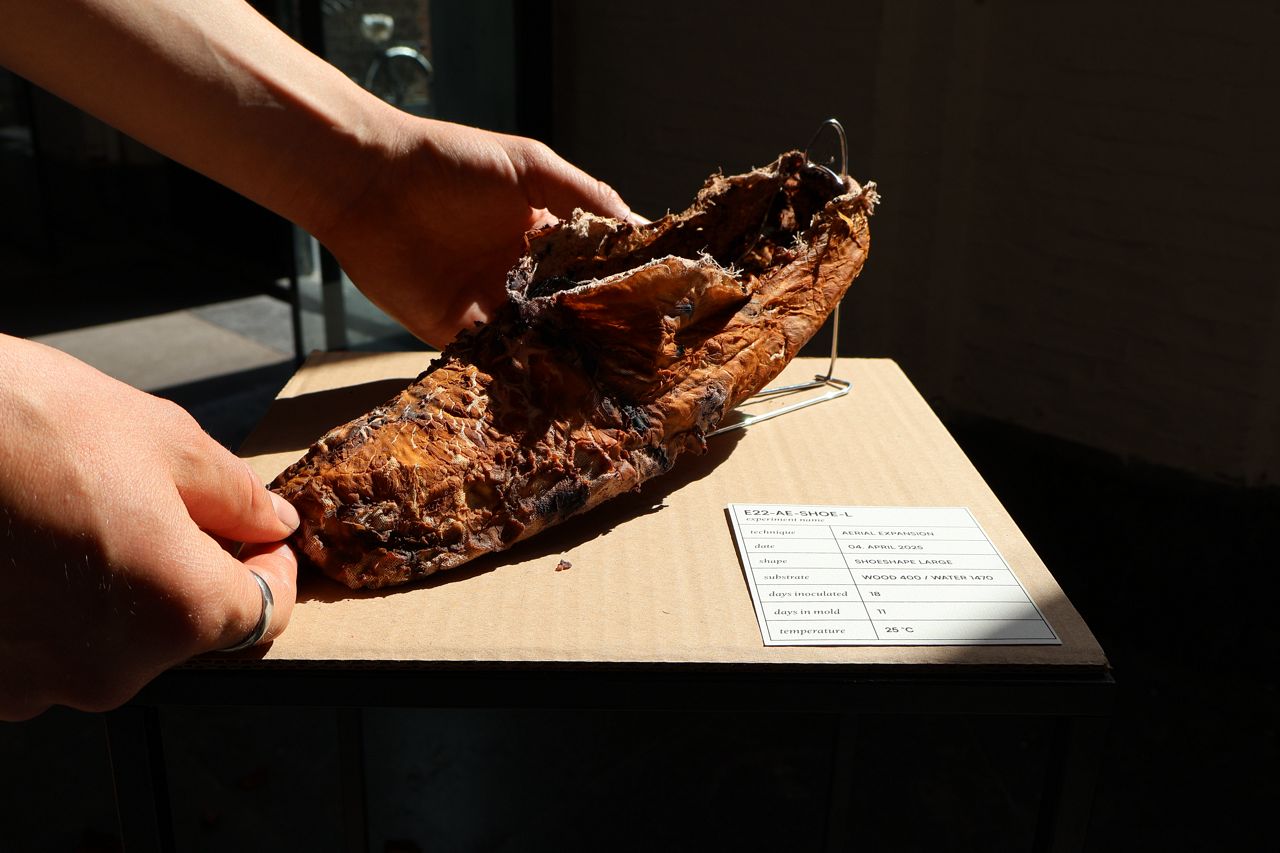
Moritz Ploens
Keywords: Biodesign, Multispecies entanglements, Mycelium
Organisms engage in relationships. They do so crossing the boundaries of their own species. They are influencing and interacting with each other, which makes them dependent on one another. It is these relations, referred to as multispecies entanglements, that are often neglected in current bio-design processes.
In my graduation project I investigated multispecies entanglements and the ethical implications within bio-design processes, proposing a design practice that utilizes microorganisms whilst valuing relationality.
Such approaches often involve the isolation of microorganisms from their original habitats. They are cultivated in laboratory settings, where their environments are controlled to develop forms that serve human purposes. Possible relationships with other microbial actors are thereby eliminated. Instead of rejecting this environment of control, I embraced it as the only way to take care of the organism with certainty. Acknowledging the human-centred dimension as an integral part of my practice, I aim to enable the formulation of new entanglements alongside my own material needs.
Representative of this practice, fungal mycelium was examined. Working with Pure Mycelium Material (the pure form of a fungal organism, mostly used for leather-like applications) enabled a practice that takes a fungus from the forest, cultivates it in the laboratory, and, after harvesting, reintroduces the remains of the process – the reproductive fungal organism – into its original habitat.
The central site of this project was the laboratory I set up in a greenhouse within our department studio. Within this greenhouse I explored different stages of control to develop a three-dimensional growth of Pure Mycelium. This technique accumulates the mycelium only at the spots where it is needed by the human being, in order to waste less of the organism.

